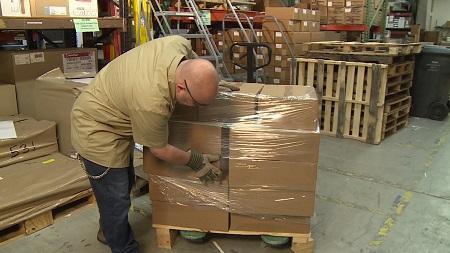Materials handling is an essential part of many workplaces, with workers frequently lifting, carrying, and moving heavy items and materials. However, these activities can also pose a significant hazard to workers if they are not performed safely.
In this blog post, we will explore the importance of materials handling safety in the workplace and discuss some key steps that businesses can take to prevent accidents and injuries.
First and foremost, it’s important to recognize the potential dangers of materials handling. These can include the risk of being struck by falling objects, as well as the risk of overexertion or strain injuries due to improper lifting techniques. In addition, there is the potential for exposure to hazardous materials, such as chemicals or gases, as well as the risk of slips, trips, and falls due to wet or cluttered surfaces.
To address these hazards, businesses should implement a comprehensive materials handling safety program that includes training for workers, regular inspections of equipment and the work environment, and clear safety protocols for handling materials. This should include procedures for safely lifting and carrying heavy items, as well as guidelines for storing and transporting materials to prevent accidents.
In addition to training and inspections, businesses should also consider implementing safety features in their work environment. This can include barriers and guardrails to prevent workers from falling, as well as warning signs and labels to alert workers to potential hazards.
Another important aspect of materials handling safety is ensuring that workers have the proper equipment to perform their tasks safely. This can include providing workers with gloves, protective eyewear, and other personal protective equipment (PPE) to prevent injuries. In addition, businesses should make sure that workers have access to tools and equipment, such as forklifts, pallet jacks, and hoists, to help them move and lift heavy items safely.
By taking these steps, businesses can help to create a safer working environment and reduce the risk of accidents and injuries. This not only protects workers and helps to prevent costly downtime, but it can also improve the overall efficiency of the business by ensuring that materials can be handled safely and efficiently.
In conclusion, materials handling safety is an essential part of any workplace, and businesses should take steps to ensure that their workers are properly trained and equipped to handle materials safely. This can include implementing safety protocols, providing training and PPE, and regularly inspecting the work environment. By prioritizing materials handling safety, businesses can protect workers, improve efficiency, and ensure the smooth operation of their facilities.
Do you need Online Training for Materials Handling Safety in the Workplace?
Try a free demonstration of our Materials Handling Safety in the Workplace training program, where you can see the full content of the training program and how the system works from the perspective of the trainee:










